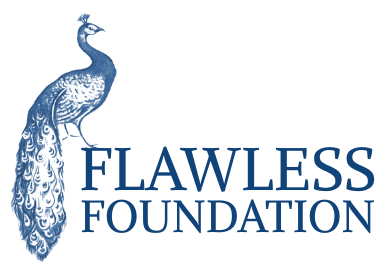The issue of bullying is especially close to our hearts here at Flawless. Although this is a very serious issue, we find hope in the knowledge that prevention is possible, through the intersection of social and emotional learning and culture change. October is National Bullying Prevention Month so we are sharing our top 5 tips for bullying prevention:
Modelling inclusion.
Our colleague Dr. Robin Stern from the Yale Center for Emotional Intelligence is a leader in bullying prevention and social and emotional learning. (SEL) Dr. Stern also co-developed RULER (recognizing, understanding, labelling, expressing, and regulating), an evidence-based approach for bringing SEL into the classroom. During our conversations about this topic, she has emphasized time and time again how important it is for adults to model inclusion for children.
“Just getting rid of bullying doesn’t produce compassion,” Dr. Stern told us. “What we know works is building skills for emotional intelligence in schools, both for kids and adults, and also building a positive climate with the work of social/emotional learning.”
Emotional Intelligence is as important as any other type of intelligence.
Kindness, empathy, emotion regulation…while all of these qualities sometimes spontaneously arise within us, we also need to be educated in how to manage our own behavior and tune into the feelings of others when it doesn’t come as naturally. Emotional intelligence is a skill, and it should be learned, encouraged, and practiced alongside other abilities. Dr. Marc Brackett, Director of the Yale Center for Emotional Intelligence has recently written a new bestseller called, Permission To Feel which combines research, neuroscience and his personal experiences to educate us all on this important topic.
We need to teach SEL.
Emotional intelligence needs to be taught in schools. Integrating SEL programs in schools has yielded overwhelmingly positive results, not only for students, but for entire school communities. Yale Center for Emotional Intelligence’s RULER Approach has been implemented in over 2000 schools reaching over a million students globally. More good news is that this vision for integrating SEL into our schools has become recognized in the mainstream as a crucial aspect of education. The Collaborative for Academic, Social, and Emotional Learning (CASEL) just held its inaugural Social and Emotional Learning Exchange conference and the response was extraordinary. Registration filled very quickly with five hundred people on the waiting list. It certainly seems that our dream of a flawless world where SEL is as common to a curriculum as algebra is on its way to coming true.
Bullies need support, too.
According to Dr. Stuart Ablon, Director of Think:Kids, “Bullies lack the skill, not the will, to behave better.” He goes on to say that “having compassion and understanding for the bullies” is one of the most effective prevention tactics. Empathy for kids with these types of social challenges will probably not come as naturally as empathy for their victims, but it is essential that we use our own emotional intelligence to try and collaborate and understand the reasons behind their behavior. Building a relationship with these children and offering our support, with the understanding that they are doing the best they can is the first step in connecting and helping them. Dr. Ablon’s Collaborative Problem Solving Approach‘s philosophy is “Kids Do Well if They Can” and is an effective method of working with children and teens who exhibit these behaviors.
What can you do?
Bullying prevention requires personal commitment from each of us. How can you take action today to create a more flawless and inclusive world? We need to recommit ourselves to being emotionally attuned to others, especially when it’s hard. What skills can we teach, what attitudes can we model, and what support can we give? Asking ourselves these questions on a regular basis is a good way to start modelling the behaviors we want to encourage in the next generation. And remember, a simple act of kindness goes a very long way so reaching out to someone who might feel alone and marginalized could make someone’s day and potentially save a life.







